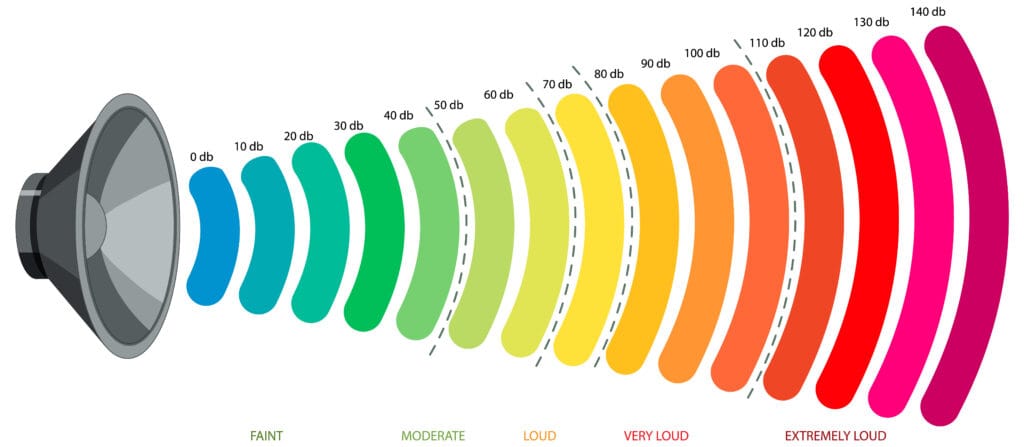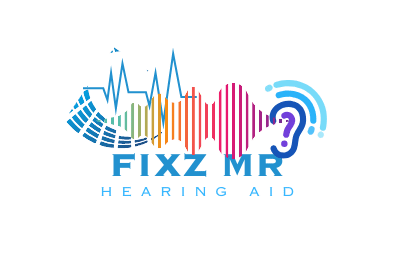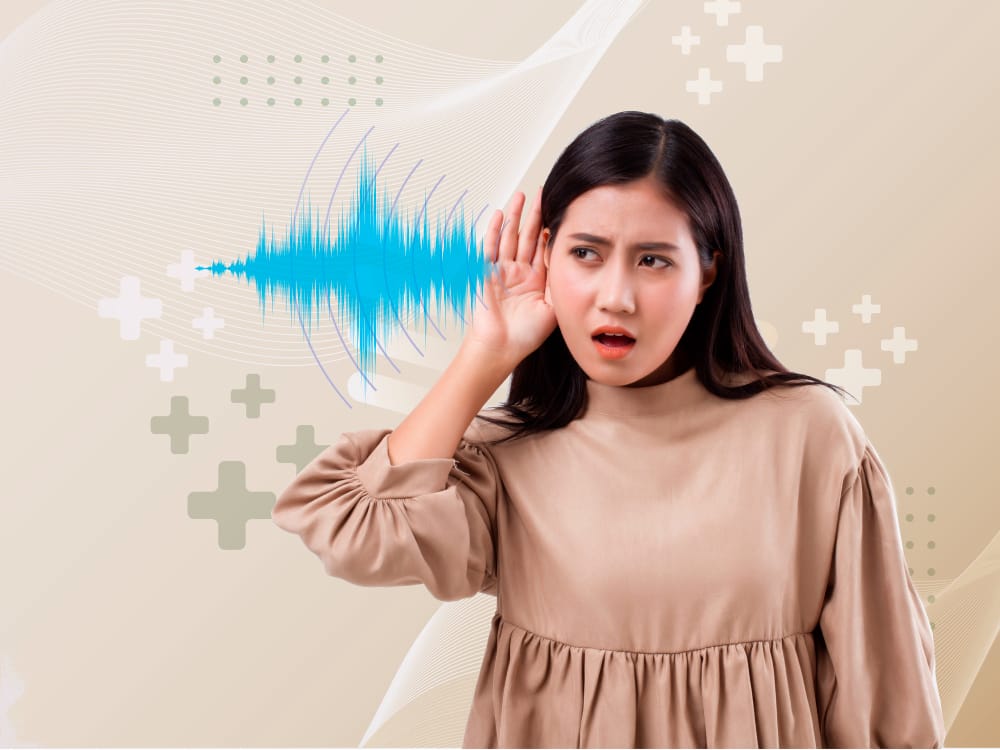Hearing is more than just listening to sounds. It’s key to social life, close relationships, and feeling good mentally. For many, losing their hearing leads to feeling alone and disconnected. But, there’s hope. Learning about hearing loss and understanding hearing levels can change everything.
Experts in hearing healthcare are leading a change. They’re making hearing aids more than just sound boosters. These devices help people connect, fit into their lives, and feel confident again.
The challenge of hearing loss affects people of all ages. It impacts millions worldwide and changes how they live. But, new hearing aid technology is here to help. It offers a way to clear up the confusion and bring back the joy of hearing.
Even with modern hearing aids, there’s still a stigma around them. But, these devices have many features for different hearing needs. It’s important to tackle the emotional side of hearing loss too. Support systems and strategies like humor and being assertive help people deal with hearing loss.
Key Takeaways
- Hearing loss affects people all over the world, no matter their age.
- Improving life quality means tackling both the emotional and physical sides of hearing loss.
- It can take years to accept and use hearing aids, showing the need for awareness.
- New hearing aid technology meets individual hearing needs and lifestyles.
- It’s important to fight the stigma around hearing aids for better society and self-esteem.
- Support and strategies are key for those facing the social effects of hearing loss.
- Understanding hearing levels is a big step towards empowerment and a better life.
The Silent Epidemic of Hearing Loss
Hearing loss affects people of all ages and cultures worldwide. It’s a silent issue that has big health and economic impacts. This section looks at how widespread hearing loss is, its causes, and its effects on people’s minds.
Global Prevalence and Impact on Individuals
Now, over 48 million Americans have some kind of hearing loss. This number is expected to grow as more people get older and face environmental risks. Hearing loss is now more common than diabetes and cancer in the U.S.
The psychological impact of hearing loss is huge. It affects how people connect with others, leading to feeling alone and having fewer friends. People with hearing loss are also more likely to struggle at work, which adds to their stress.
Psychological Effects and the Importance of Social Connections
Hearing loss is not just about missing sounds. It deeply affects a person’s mental health. Those with hearing loss often feel lonely, sad, and angry because they can’t talk well with others. This shows why it’s crucial to understand and address hearing loss.
New hearing technology and therapy are helping people connect better and live fuller lives. Talking openly about hearing loss can also make people more accepting of hearing aids and treatments.
Being able to talk and communicate is key to keeping relationships strong and being part of society. Finding and treating hearing problems early can really help. It shows how important social connections are for healing and getting better.
Decoding Hearing Levels

Understanding how well we hear is key and starts with interpreting audiograms and hearing test results. These tests show how much hearing loss there is and help pick the right hearing aid technology. They are part of modern sound amplification solutions.
Hearing test results are crucial for finding out how much hearing loss there is. For example, mild hearing loss means you can’t hear sounds between 25 and 40dBs. Sounds like a whisper or a ticking watch might be hard to hear. Moderate hearing loss makes it tough to hear sounds quieter than 40 to 70dBs.
| Hearing Loss Level | Decibel Threshold | Common Sounds |
|---|---|---|
| Mild | 25-40dBs | Whisper, Leaves rustling |
| Moderate | 40-70dBs | Normal conversation, Dishwasher |
| Severe | 70-95dBs | Busy traffic, Vacuum cleaner |
| Profound | Above 95dBs | Motorcycle, Lawnmower |
Audiograms let healthcare providers show hearing loss levels across different sounds and volumes. This visual tool is key for both patients and professionals. It helps in making a detailed plan for each person, stressing the need for early detection and action.
Speech audiometry checks how well someone can understand speech at different volumes. This helps in adjusting hearing devices. Recognizing hearing problems early can greatly improve life, making communication clearer and social interactions better.
Our look at hearing levels shows the importance of getting interpretation of audiograms and hearing test results from experts. This leads to better hearing and a quality life. For more info, check out FDA-approved hearing technologies.
Tackling the Causes of Hearing Impairment
Understanding hearing loss causes and using hearing loss prevention strategies is key to protecting our hearing. Thanks to new tech and medical advances, we can now prevent and manage hearing loss better. This helps millions of people around the world.
Common Factors Leading to Hearing Loss
Many things can lead to hearing loss. These include loud noises, getting older, genes, some medicines, and certain health issues. For example, being around loud noises over 70 decibels can harm your hearing. Also, many hearing problems in kids could be stopped with good health plans, showing why early action is crucial.
Risk Factors and Prevention Strategies
Knowing and managing risks is key to lowering hearing loss. Adults in noisy jobs should use ear protection and follow safety rules. Regular hearing checks help spot problems early, which can stop them from getting worse.
Kids need to learn about the dangers of loud music and earbuds. Teaching them safe listening habits can lower their risk of hearing problems early on. Schools and health campaigns can spread the word on how to protect hearing, making a big difference in health.
| Preventive Measure | Impact |
|---|---|
| Use of hearing protection in noisy environments | Significant reduction in noise-induced hearing loss |
| Regular hearing screenings | Early detection and management of hearing loss |
| Public health campaigns | Increased awareness and preventive behavior adaptation |
| Educational programs in schools | Long-term reduction in hearing loss causes among children |
By focusing on both personal and community actions to prevent hearing loss, we can tackle this big health issue. Making informed choices and spreading knowledge through education can greatly reduce hearing loss worldwide.
The Journey from Hearing Loss to Empowerment
Realizing you need help with hearing loss can be tough, filled with feelings like denial and acceptance. This key moment starts a journey to get back your hearing independence. It’s where you start looking into different ways to treat hearing loss, paving the way for a life of empowerment.
Recognizing the Need for Assistance
Understanding you need help is the first step towards getting your hearing back. Research shows that about 95% of kids with hearing issues are born to parents with normal hearing. This often leads to a delay in getting help because parents might not know what to do. Accepting this fact pushes people to look into different treatments for hearing loss, each suited to their needs.
Personal Triumphs: Stories of Hearing Aid Users
Stories from those who use hearing aids often show big changes. People who used to struggle with hearing find more confidence and a better life. Thanks to better technology and custom fittings, everyday talks become easier and more enjoyable.
For many, the journey goes beyond just personal gains. The idea of ‘Deaf Gain’ celebrates the special skills and views that come from hearing differences. This positive view has changed how people see hearing loss, encouraging more to accept and celebrate their unique hearing identity.
| Aspect | Impact on User Experience | Improvement Opportunities |
|---|---|---|
| Technology and Fitting | Improves clarity and comfort, making daily life easier and reducing social stress. | More research and custom devices to suit different needs and settings. |
| Community and Identity | Helps people embrace their hearing differences, boosting self-esteem and community involvement. | Supporting ‘Deaf Gain’ and acceptance to lessen stigma and build stronger support networks. |
| Professional Support | Access to a team of experts leads to better care and higher satisfaction. | More funding and training for professionals to ensure top-notch support. |
Sharing these success stories not only teaches others but also brings hope and motivation. It shows how treating hearing loss can change lives. From better communication to a deeper connection with the world, the path from hearing loss to empowerment is full of hope and success stories.
Interpreting Audiograms for Better Understanding
Understanding audiograms is key to diagnosing and managing hearing loss. These charts show how well someone can hear different sounds. They also highlight the auditory threshold, which is important for knowing how well someone can hear.
Analyzing Hearing Test Results
An audiogram shows hearing test results in a visual way. It plots sound frequencies against intensity levels. The horizontal axis goes from 250 Hz to 8000 Hz, covering speech sounds. The vertical axis shows sound intensity in decibels (dB).
Knowing how to read these results is crucial for patients and doctors.
The table below explains the main parts of audiograms and what they mean:
| Frequency (Hz) | Normal Hearing Range (dB) | Typical Conversation Level (dB) | Common Hearing Loss Threshold (dB) |
|---|---|---|---|
| 500 | 0-25 | 60 | 20-40 (Mild Loss) |
| 1000 | 0-25 | 60 | 41-55 (Moderate Loss) |
| 2000 | 0-25 | 60 | 56-70 (Moderate-Severe Loss) |
| 4000 | 0-25 | 60 | >90 (Profound Loss) |
This table shows that normal conversation is about 60 dB. Different levels of hearing loss are identified by how loud sounds must be for someone to hear them.
The Significance of the Auditory Threshold
The auditory threshold is the softest sound a person can hear. Doctors use these thresholds to measure hearing loss at different frequencies. They help decide if someone needs hearing aids.
For example, if a person can barely hear sounds at 2000 Hz at 55 dB, they likely need help to communicate better.
Interpreting audiograms is a powerful tool for hearing experts. It helps them create specific treatment plans based on hearing test results and auditory threshold levels.
Cutting-Edge Solutions for Hearing Restoration
Technology has changed the game in hearing aid solutions. Modern hearing devices now come with advanced features. These devices improve sound quality and make listening more comfortable.
Technological Innovations in Hearing Aids
Today’s hearing aids lead the way in hearing health tech. They have AI-enhanced sound adjustment. This means clearer speech in loud places and better social interactions.
Researchers are also looking into gene and stem cell treatments. These could help people hear better or even restore their hearing. Such innovations aim to go beyond traditional hearing aids.
Biotech advancements are exploring new ways to treat hearing loss. For instance, using progenitor cells to grow hair cells in the cochlea is a breakthrough. This could greatly improve hearing recovery.
| Research Area | Innovative Details | Projected Impact |
|---|---|---|
| Gene Therapy | Development of gene-editing tools to enhance auditory function. | Potentially restore natural hearing in individuals with genetic hearing loss. |
| Stem Cell Therapy | Use of progenitor cells to generate hair cells in the cochlea. | Revolutionize treatment options and potentially restore hearing. |
| AI-Enhanced Hearing Aids | Smart algorithms to improve speech understanding in noise. | Enhance user experience in diverse acoustic environments. |
Modern hearing devices are more than tools for hearing loss. They offer rich, natural soundscapes. This blend of tech and medical science could bring back the joy of hearing for millions.
Challenging Stereotypes: Changing Attitudes towards Hearing Aids
The way we talk about hearing aids is changing. Education and awareness efforts are working to break down hearing aid stigma and increase acceptance. We’re moving towards seeing hearing aids as tools that empower us, not signs of decline. This change is crucial for the millions worldwide who struggle with hearing loss, encouraging them to get help without fear.
Reducing Stigma and Encouraging Acceptance
It’s important to understand the big impact hearing loss has. In the U.S., nearly 48 million people have some kind of hearing loss, and this number goes up as people get older. For those over 75, almost half face serious hearing issues. But, about 80% don’t use hearing aids because of stigma, not knowing the benefits, cost worries, or denying their hearing loss. People often see hearing aids as only for the elderly or as signs of weakness.
By spreading the word through education and sharing hearing loss stories, we can change this. Doctors and health experts help by clearing up myths and offering support with facts. New technology, like invisible hearing aids, also helps by offering designs that are less noticeable and more appealing.
| Issue | Impact | Opportunity |
|---|---|---|
| Stigma around hearing aids | Social isolation, depression, anxiety | Education campaigns, advocacy |
| Cost and denial of impairment | Low adoption rates of hearing aids (20% usage among those in need) | Insurance policies, better awareness |
| Misconceptions about appearance | Delayed treatment | Visibility of sleek, modern designs |
| Societal stereotypes | Perpetuate fear and embarrassment | Public discussions, media portrayals |
Accepting hearing aids and challenging stereotypes helps those who need them and boosts social connections and mental health. It’s about changing how we see hearing aids to make a place where everyone feels valued and supported in their path to better hearing.
Nurturing Well-being: Comprehensive Treatment Options for Hearing Loss
Finding better hearing and overall well-being for those with hearing loss depends on two key things. These are personalized hearing care and using new technology. Together, they make life better and offer many hearing loss treatment options.
Personalized Approaches to Hearing Care
Everyone’s hearing loss is different, so treatments must be tailored to fit. Audiologists now focus on what the patient needs and likes. This means doing detailed tests, talking with the patient, and then making a plan just for them. Personalized hearing care makes sure treatments like hearing aids or cochlear implants work well with your life.
Leveraging Technology for Enhanced Quality of Life
Technology has made a big difference in hearing loss treatment. Now, there are hearing aids that connect to phones and cochlear implants that help people with severe loss feel sound again. There are also devices and programs to help with everyday listening and feeling better emotionally.
Using these new solutions with a personal touch really helps people with hearing loss. It’s not just about hearing better. It’s about living fully in all areas of life.
Conclusion
The hearing loss journey has seen a big change thanks to new hearing aid tech. This change has made life clearer for many. Audiologists have played a key role in this shift, helping us see hearing health in a new way.
They don’t just fix hearing loss. They help people live better lives. From understanding how our ears work to sharing stories of personal success, the impact is clear. Audiologists use special tests and methods to help people communicate better and live fuller lives.
Now, hearing aids are more than tools; they’re keys to connecting with the world. They help people join in conversations and enjoy life’s sounds. This progress is making a big difference, making hearing aids essential for a good life.








